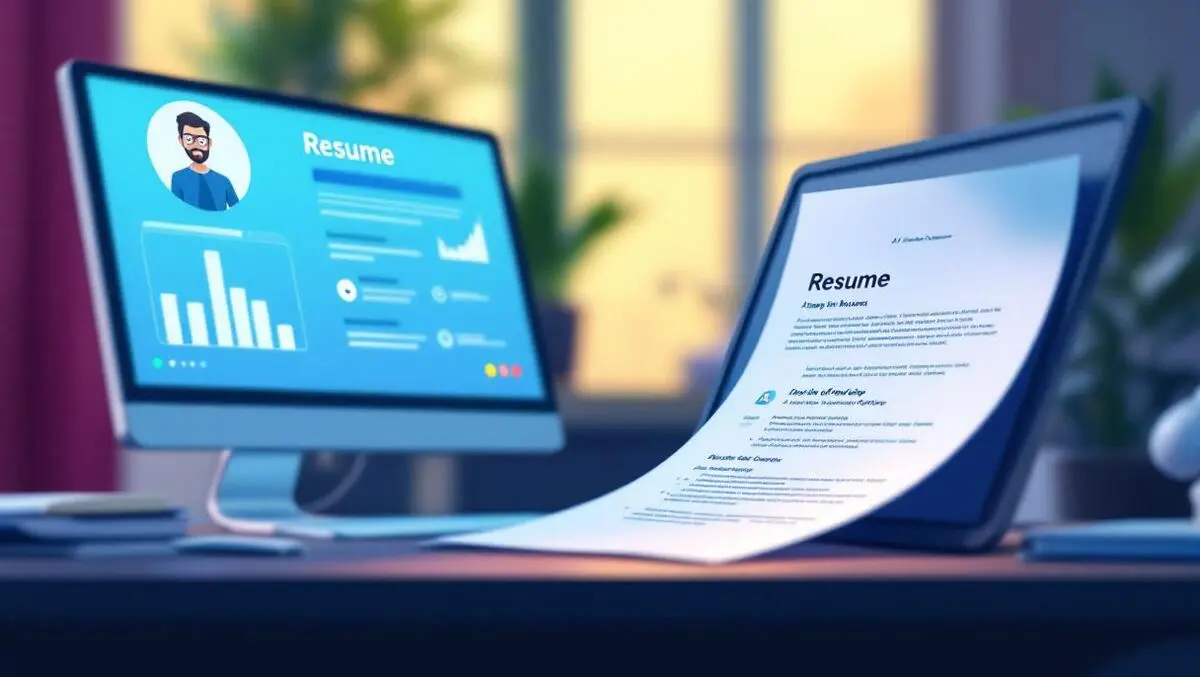
ATS-friendly resume formatting and hiring in the age of AI
In today's job market, the first "reader" of your resume is usually software.
Applicant Tracking Systems (ATS) parse (read, break down, and map) your resume into structured data so recruiters can search, sort, and rank candidates fast. When the parsing goes wrong, strong applicants can get lost in the shuffle, and another caveat? Since job seekers are also using AI to game the system, we're in a hiring landscape where both sides are optimising for efficiency, and the result is anything but.
What is parsing and why does it matter?
Parsing is how an ATS interprets your resume and turns it into searchable fields like name, job title, dates, skills, and education. If your resume formatting confuses the parser, your experience might not show up correctly in recruiter searches even if you're highly qualified and fit for the role.
There are a few types of parsers out there:
- Keyword-based: Looks for common section headers and formats. Deviate too far and you might break it.
- AI/NLP-based: More advanced systems can extract skills and infer meaning from context but they aren't perfect.
- OCR-based: Kicks in when resumes are uploaded as PDFs or images without a proper text layer. Accuracy here drops sharply.
For job seekers: Format for humans and machines
- Stick to 12pt fonts that every system recognises like Times New Roman, Calibri or Arial.
- Avoid design extras: Tables, columns, images, logos, and text boxes might look nice but can trip up parsing.
- Use clear section headers: Experience, Education, Certifications, Skills.
- Pack it with keywords: Think of your resume like SEO for job boards. Search "<your job> keywords" and use those in context and tie them to ouctomes. Don't list them in a block.
- Save and upload in .docx, not PDF. PDFs often require OCR to extract your text, and that's where things break down.
As JP Browne, Practise Manager from Talent Auckland, explains:
"Some organisations are moving away from AI screening tools, because applicants can just copy-paste job ads into AI prompts and generate amazing cover letters. But if the CV doesn't match the substance, it's game over. Your resume has to actually contain the right data and not just sound impressive. I call it CV-for-dummies because I need everything spelled out. Don't assume your title tells the story. Put in more detail, not less."
For employers: Efficiency is not effectiveness
AI and ATS tools help filter thousands of applicants but over-relying on automation can hurt you. Especially in a market where candidates are leveraging generative AI to write polished CVs and cover letters, many hiring managers are finding that what looks good on paper doesn't hold up in interview and that's slowing the process down.
Instead of streamlining hiring, AI on both sides is creating a new bottleneck: CVs that look right but don't deliver, and shortlists that fail to surface the best fit.
"It is not unusual for our team in Sydney to still receive 750–1500 applications per role," says Matthew Munson, Managing Director of Talent Sydney. "Responding to this volume of applications is hard for agencies and employers and so the levels of candidate service is suffering, leading to a lot of frustration in market."
This is echoed in South Australia by Vimal Venugopal, Senior Consultant in Technology & Project Services Recruitment in Talent Adelaide:
"Public sector jobs are seeing the highest number of applicants per job ad. According to SEEK, that index now sits at 220, and Professional Services roles are close behind at 187. That's a huge amount of competition. This data is completely in line with what we're observing in the Adelaide market. For example, we listed a Data Migration Analyst role and an ICT Support Analyst role and received 299 and 342 applications respectively."
Keep a human in the loop
ATS tools are useful but they can't replace human judgment. We recommend keeping a hiring professional involved in reviewing any final shortlist. Take a second look at 'near miss' candidates whose resumes may not have been perfectly formatted but show potential and revisit your role briefs and consider re-advertising with clarified requirements or alternate job titles. Most importantly, ensure interviews are being used to assess capability, not just alignment to the AI-generated CV.
Final tips for both sides
Job seekers: Format simply, write clearly, and tailor your resume for the role without ChatGPT doing all the heavy lifting.
Employers: Review your ATS setting, make sure your job ads are written clearly (without keyword stuffing), and don't delegate shortlisting entirely to automation. The right candidate may be hiding just behind the algorithm.
If you're a job seeker looking for your next exciting opportunity, head to our jobs board. And if you're a hiring manager looking to find top talent who can hit the ground running, get in touch today.

